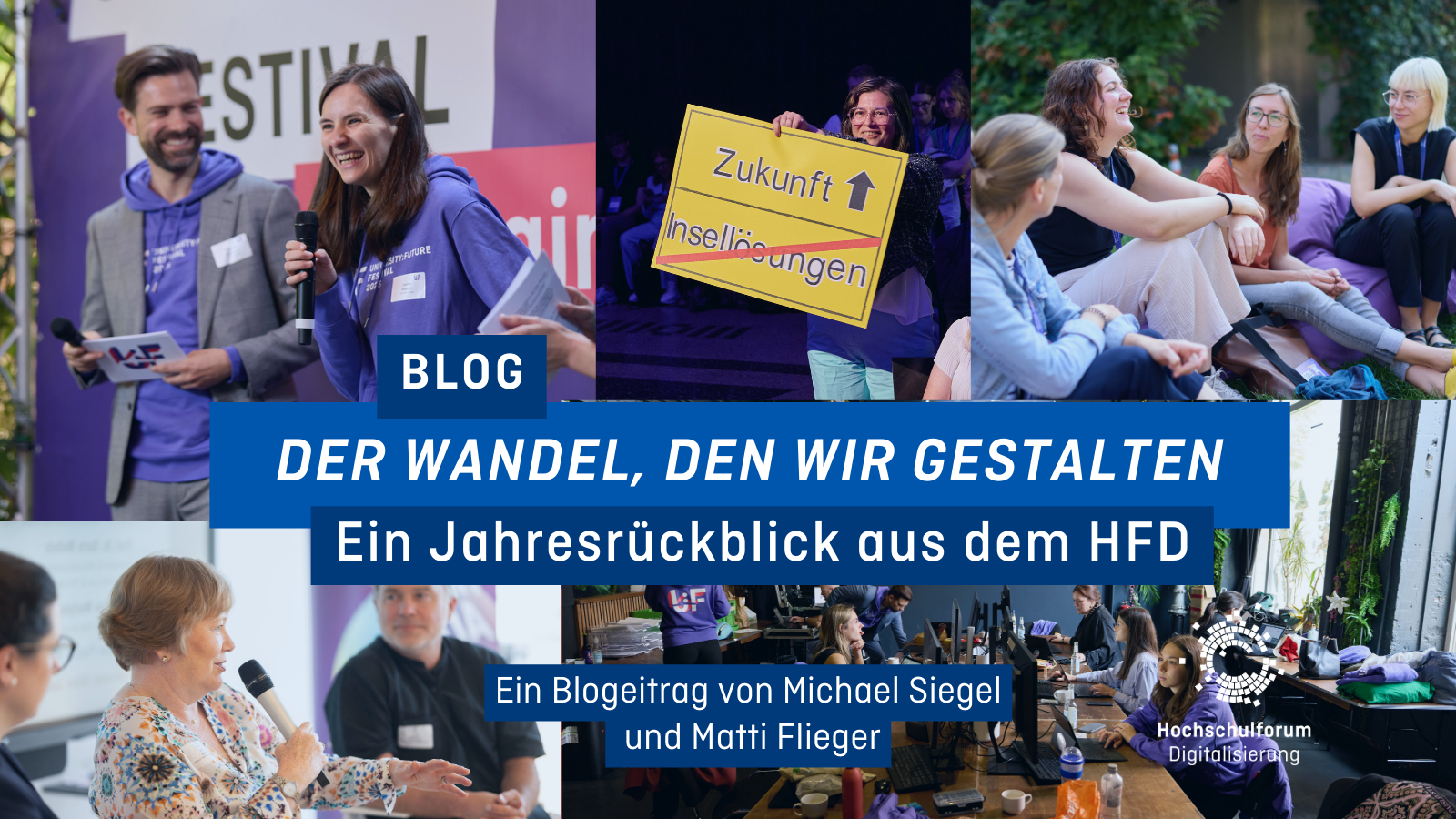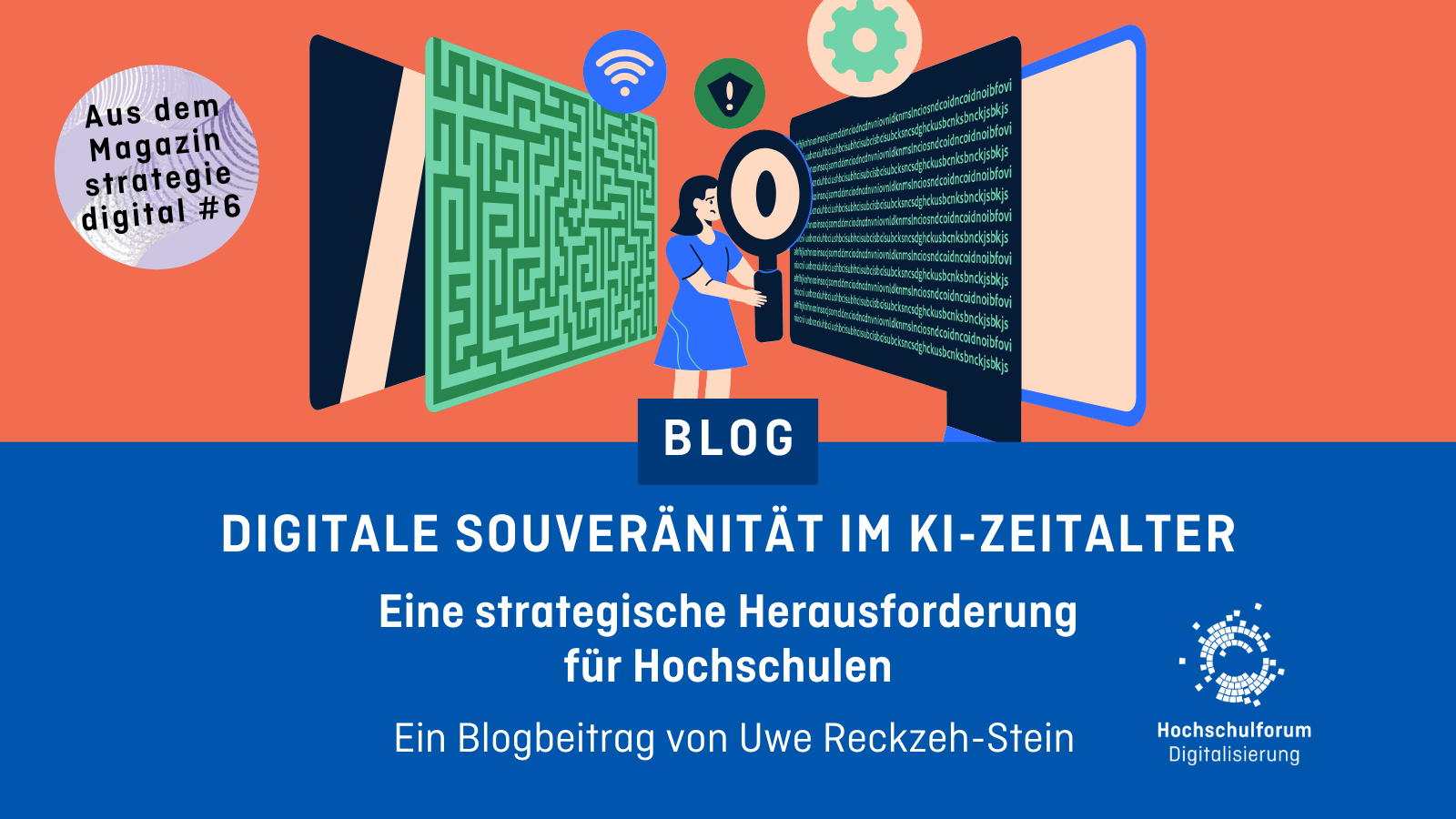The new normal at the University:Future Festival
The new normal at the University:Future Festival
24.11.20
Digital university teaching without presence formats – a state of affairs that would not have been conceivable without a worldwide pandemic. It remains to be seen what changes will take place in the New Normal as soon as the corona virus no longer forces us to keep our distance. At the beginning of October, the University:Future Festival (UFF) made the disruption to university teaching associated with Covid-19 its theme. With the “New Normal”, the HFD picked up on the shifts for digital teaching in the conference title. In this article, Katharina Mahrt presents the answers from a survey we conducted during the UFF: What insights into the New Normal in higher education has our community gained?
Translated with www.DeepL.com/Translator. Please excuse any errors.
Covid 19 and the New Normal
The Covid 19 pandemic has unleashed disruptive forces in all areas of life – our lives and the daily routine of a year ago seems to have receded into the distance. These changes are most clearly expressed in our own four walls: While these were previously primarily places to which we returned after a day at work, school or university, the home (#StayAtHome) has become the place where we stay (Ilouz 2020). The previously daily alternation between private and public space has been reduced to the bare essentials. Especially the closed educational institutions in the course of the pandemic containment show us to what extent our common rooms usually structure our social life in time and space. So in the Corona year 2020, happiness was found among other things in those who had a garden or at least an extra study (apart from the fact that the system-relevant professions show us who was and is exposed to much greater risks). The lockdown makes clear above all the social and financial disparities – who has what work equipment and financial resources to survive this health crisis, which often also entails salary cuts – halfway through?
![The new normal: Stay at home. Bild: [https://unsplash.com/photos/el7ZoooLPhI United Nations COVID-19 Response] Illustration von Menschen in ihren Wohnungen. Das neue Normal.](/sites/default/files/images/blog/photo-1588781735813-7463d9f8d011.jpg)
The digital possibility space
Imagine for a moment that Covid-19 would have met us 20 or 30 years ago, and thus without the current state of digitization. Surely creative and pragmatic solutions would have been conceived in 2000 or 1990: Distance learning via television or letter. Work meetings via telephone conference instead of jitsi and zoom. What becomes clear from this little game of thought is that the space of possibilities offered by digital tools and a relative spread of digital terminals for collaborative work, for interactive exchange, for regular check-ins or live streams, could have mitigated the disastrous consequences of the pandemic. Some of the best practices that are now being tried and tested have already fundamentally changed the way we live, work and learn. The question remains: Which of these changes will prevail in the long term?
Digitization has received a tremendous boost – be it from the big ed tech companies and the growing market share of digital business models, in terms of the expanding opportunities for remote working and, of course, in the education sector.
The New Normal
University:Future Festival – LEARNING, SYSTEMS AND THE NEW NORMAL the title of the conference took up the new normal – and was addressed in the different sessions itselves, e.g. here, here or here.
At the festival, we asked you what you had learned about the New Normal in higher education. I clustered the results – 60 free text answers – thematically. So the passages are by no means representative – all the more I would appreciate your perspective(s) via the comment function at the end of this article!
“Nothing will ever be the same, nothing stays the same, change keeps you awake […]”
“There is no New Normal. The current situation is a long awaited step in the right direction. Finally, what I have been living for myself for more than ten years is here.”
“It is ok to experiment and fail but not ok to hope things will get better just because the latest technology is in town. Let’s unlearn, relearn and dare learning for life!”
Let us start with a truism that is as simple as it is true: the new normal means to normalize the constant changes. Or in other words to acknowledge: “There is no normality”. For those who have been dealing with the digital turn in university teaching for some time, the New Normal releases euphoria about the sudden changes, innovations and a new speed that are possible. Admittedly, constant change is also an imposition – what helps is the right mindset, i.e. an individual as well as institutional constructive and creative attitude towards change – this includes trial and error, testing and a positive error culture as state of the art.
Digitale Anthropologie
“It’s still humans that matter!”
“To constantly put the role of teaching and learning to the test. Give students more room for feedback and reflection”.
“Learning companion instead of teacher”
Interestingly enough, the social aspect of the digital world is taking on a new meaning: the focus is on the human being and the role of students is becoming increasingly important for universities. The intermediate conclusion of the first digital semester already pointed in this direction: With the questions about digital didactics, the perspectives of the students become more important. And in the design of digital teaching the integration of students’ skills and a participatory approach are advantageous. At the same time, Dr. Yasmin Djabarian made it clear in the final panel of the U:FF that student participation is demanded more than ever: “Nothing about us without us.“
“It will be hybrid, networked, cooperative.”
“I think more people across the university landscape […] realise that ‘lecturing’ is not a good use of our in-person time together. I hope we go forward with using more blended learning for dividing up tasks and getting the most out of our in-person time […].”
“In my opinion, we still have a lot to do! Even if “only” 10-20% of the students did not come along in the online semester, these are still very high numbers in absolute terms. In my opinion, the teaching that we somehow managed to do in the past semester can and should or must be improved significantly in many (!) areas!
In terms of digital teaching, the New Normal is characterized by new standards: Hybrid formats, blended learning and the equivalence and complementarity of digital and analog teaching. In this context, a critical look at the pitfalls of the Old Normal is also called for. According to the answers to our survey, location-independent teaching is thus gaining acceptance. The next step for a better, new normal in teaching is now to optimize interactions and socializing in digital teaching – also to counteract the drop-out of students, which is perceived as too high.
Potential for change
“Better staffing needed – support structures important”
“Special attention must be paid to the ‘new digital divide’.
From a political point of view, the next steps are just as clear according to the UFF survey, because the debate on the digitization of studies and teaching is a good opportunity to talk publicly about the fundamental challenges involved: More personnel, better basic technical equipment and diversity-sensitive teaching are called for, which sees inequality, anti-discrimination, accessibility, the new digital divide and digital ethics as integral rather than add-ons. These are the words echoing in the ears of HRK President Peter-André Alt, who, in his keynote speech: “What virtual teaching do we need?” states that digitization does not mean a savings program for teaching.
“We’re in this together.”
How do we stabilize necessary changes and adjust to the new normal? The magic word is collaboration: “It’s only possible with each other: we all have to negotiate together how we want to work and learn together – this concerns teachers, students as status groups, their relationships with each other and the agility necessary for New Learning.
![We are in this together. Bild: [https://unsplash.com/photos/spb4-WrdTtE United Nations COVID-19 Response] Ein Berg der die Covid19-Infektionen symbolisiert.](/sites/default/files/images/blog/photo-1588779014410-ac85a2d88fd7.jpg)
Conclusion
The New Normal may become apparent in everyday life primarily through the new significance of the home as a simultaneous place of living, working and education, and the changed relationship between public and private space. With regard to the digitization of studies and teaching, the survey results can be summarized as follows: the value of the digital has achieved equality with analog formats. In the New Normal, previous resistance to the digital transformation was dissolved. Hybrid teaching and blended learning are considered new standards in the New Normal – but in the constant mode of change it remains open what further shifts lie ahead. With a suitable mindset, we can embrace this constant change and work together through Collaboration New Learning.
What the University:Future Festival has managed to establish – digital conferences as a fully-fledged alternative to attendance models and a well-timed, professional and cross-status exchange on the New Normal at the start of the 2020/2021 winter semester – is at the same time a task for the coming months: to use the potential of digitization in a state of social crisis and to continue to jointly shape it. Helping the New Normal to succeed in the face of the pandemic is a very serious matter and a joint task for us all.
Further material:
Eva Ilouz (2020)
- Round table discussion “A new normal after the lockdown?” Freedom and Europe in the (post)corona era. FreiRaum Festival des Goethe Institut. 30.10.2020.
- Keynote „Kann das Zuhause in einer krisengeschüttelten Welt einen sicheren Hafen bieten? Gedanken zu den politischen Folgen von Covid-19“. FreiRaum Festival des Goethe Institut. 31.10.2020.


 Michael Siegel
Michael Siegel 
 Andreas Giesbert
Andreas Giesbert 
 Uwe Reckzeh-Stein
Uwe Reckzeh-Stein 